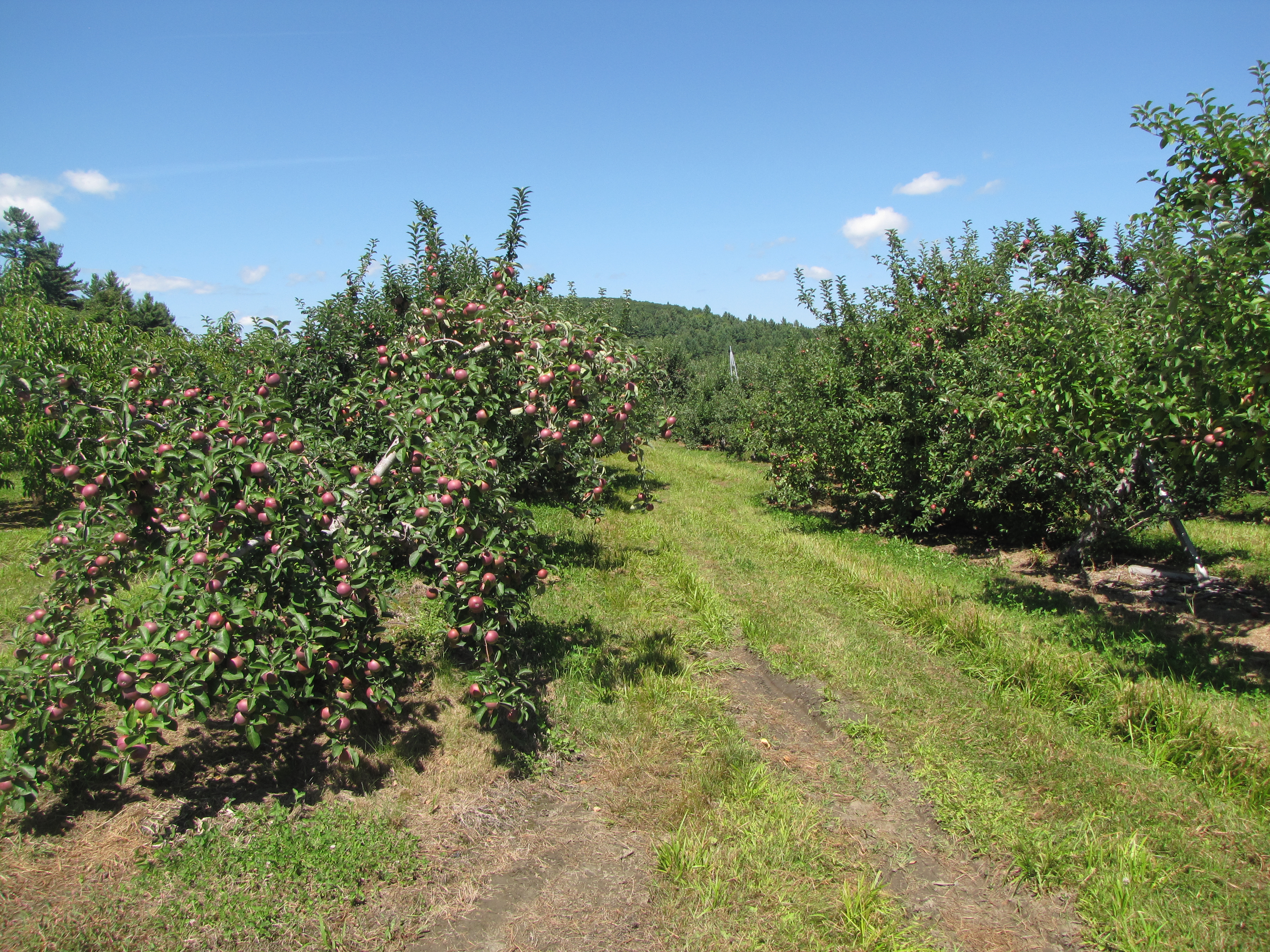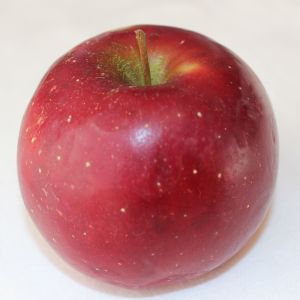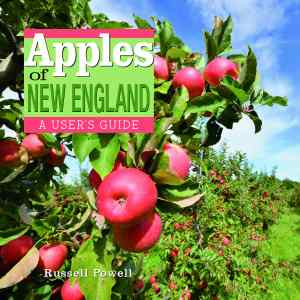
WHEN IT COMES TO APPLES, New England truly is a melting pot. In addition to the dozens of varieties discovered in the region, apples from across the country and around the world have flourished in New England’s climate and soils. We’ll be looking at the origins of some of New England’s best-known apples over the next several weeks.
There are only a handful of active apple-breeding programs left in the United States, at Cornell University in New York, the University of Minnesota, Washington State University, and a joint program of the University of Illinois, Purdue University in Indiana, and Rutgers University in New Jersey, known by the acronym PRI.
The PRI consortium has produced a number of cultivars that are grown in New England: early season apples Vista Bella (discovered in 1956; released commercially in 1974), Mollie’s Delicious (1948; 1966), and Pristine (1975; 1994), the mid-season CrimsonCrisp (1971; 2005), and the late-season GoldRush (1973; 1993).
Two other early season apples developed by PRI are Jersey Mac and Williams’ Pride.

Jersey Mac is a medium-sized, round apple with green and light-red patches on a dark-red skin. Beneath an occasionally tough peel, its tender, white flesh has a mild flavor that is more sweet than tart, with hints of strawberry. It can be used for both cooking and fresh eating. Its season is relatively short, as it does not store well. One grower calls Jersey Mac “a good choice for McIntosh lovers who are getting impatient waiting for the Macs to ripen.”
Despite its name and resemblance, though, Jersey Mac’s complex parentage does not include McIntosh. It is a cross between Melba, Wealthy, Rome, and Starr, an obscure, yellow-green apple from the 1920s known for its tart, juicy flesh. Jersey Mac was developed in 1956 at the Rutgers New Jersey Agricultural Experiment Station in New Brunswick, and released commercially in 1971.

Like Pristine, Williams’ Pride is an outstanding newer entry into the early season market, discovered in 1975 and released in 1988. It is a medium-to-large apple, slightly conical in shape with maroon-red color. Its crisp, juicy flesh is cream-colored, and it has a spicy, nicely balanced, sweet-tart flavor. It is an all-purpose apple especially good for fresh eating.
Like Jersey Mac, Williams’ Pride has complex parentage that includes Melba, Jonathan, Mollie’s Delicious, and Rome. It was named for Edwin B. Williams, long-time head of the disease-resistant apple-breeding program at Purdue University in West Lafayette, Indiana.
Two late-season apples from PRI are Enterprise and Suncrisp.

Enterprise is a round, medium-to-large apple, deep-red in color with prominent white lenticels. Its spicy flavor is more tart than sweet, and it is considered best for cooking. Its flesh, crisp at harvest, softens some in storage, and its somewhat tough skin develops a waxy coating, but it keeps exceptionally well.
Discovered in 1978 and released in 1990, its parentage includes Golden Delicious, McIntosh, Rome Beauty. Another variety credited to Edwin B. Williams, Enterprise was developed for disease resistance at Purdue. It is immune to apple scab and highly resistant to fire blight and cedar apple rust.

Suncrisp is a late-season apple that continues to develop its flavor long after harvest. A large apple, it has orange-red striping over a yellow skin. Its cream-colored flesh is crisp and juicy. More tart than sweet when picked, it becomes sweeter and develops a complex, spicy flavor in storage, where it can keep for up to six months. It is especially good for cooking.
Suncrisp was developed in the 1990s by Dr. Frederick Hough at the Rutgers New Jersey Agricultural Experiment Station in New Brunswick from Gold Delicious, Cox’s Orange Pippin, and Cortland parents. The Suncrisp name is trademarked by Rutgers University.
* * *
WITH THE FRESH HARVEST upon us, here is a simple, straightforward, and delicious way to get those apple juices flowing. Adapted from From A Monastery Kitchen by Brother Victor-Antoine d’Avila-Latourrette.
Apple Crumble
4 medium-sized New England apples, sliced
½ c flour
½ c whole wheat flour
⅓ c sugar
1 t baking powder
¼ t salt
½ t nutmeg
2 eggs
1 t cinnamon
3 T butter, melted
Preheat oven to 375°F. Arrange apple slices in 9” round cake pan. Combine remaining ingredients except cinnamon and butter, and spread mixture loosely over apples. Stir cinnamon into butter and drizzle on top. Bake for 30-40 minutes until apples are done.
* * *
 Apples of New England: A User’s Guide (The Countryman Press) is now out! A new book by Russell Steven Powell, it features color photographs and descriptions of more than 200 apple varieties grown, sold, or discovered in New England, plus a history of apple growing in the region spanning nearly four centuries. Photographs are by Bar Lois Weeks, executive director of the New England Apple Association.
Apples of New England: A User’s Guide (The Countryman Press) is now out! A new book by Russell Steven Powell, it features color photographs and descriptions of more than 200 apple varieties grown, sold, or discovered in New England, plus a history of apple growing in the region spanning nearly four centuries. Photographs are by Bar Lois Weeks, executive director of the New England Apple Association.
In addition to extensive research, Powell interviewed senior and retired growers and leading industry figures from all six New England states, and obtained samples of many rare varieties at the preservation orchard maintained by the Tower Hill Botanic Garden in Boylston, Massachusetts.
A chapter on John Chapman (“Johnny Appleseed”), for the first time links him with another Massachusetts native, Henry David Thoreau, as the fathers of American wild apples, Chapman for planting them, Thoreau with his pen.
Apples of New England is intended for use by all apple lovers, whether they are visiting the orchard, farm stand, grocery store, an abandoned field or a back yard — or in the kitchen. The descriptions include detailed information on each apple’s flavor and texture, ripening season, and best uses, as well as age, parentage, place of origin, and unusual histories.
Powell has worked for the nonprofit New England Apple Association since 1996, and served 13 years as executive director from 1998 to 2011. He is now its senior writer. He is the author of America’s Apple (Brook Hollow Press, 2012), a book about apple growing in the United States.
America’s Apple is now available in paperback for $19.95. Visit Silver Street Media or Amazon.com to order online, or look for it at your favorite orchard or bookstore.
4 Comments
Adam
I really look forward to Williams Pride every August.It’s a great early choice.
Jersey Mac leaves me unmoved however. I would argue that Paula Red is the better early Mac-ish choice.
I’m off to Farmers Market to get the latest.
russellpowell
Thanks Adam. I’ve had two very good PaulaReds this week!
New England Apples From The USA | New England Apples
[…] THE AMAZING APPLE has traveled back and forth across America since its arrival in New England in 1623, and nearly half of the United States have produced apples currently cultivated in New England. In addition to natives of the six New England states, previous posts in this series have highlighted varieties from apple-breeding programs in Minnesota, New York, and a consortium of the University of Illinois, Purdue University in Indiana, and Rutgers University in New Jersey (PRI). […]
My Favorite Apple | New England Apples
[…] apples were particularly noteworthy: Gravenstein, from Atkins Farms in Amherst, Massachusetts, and Suncrisp, from Ricker Hill Orchards in Turner, […]